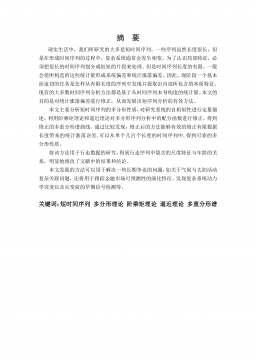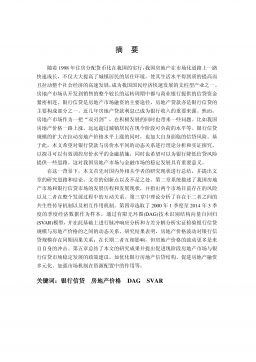高功率半导体激光器波长锁定器
VIP免费
摘 要
自从1966年光通信被提出以来,光纤通信由于具有低损耗、高传输速度、大
容量、质量轻、不受电磁波干扰、高保密性等优势发展成为了最具有发展前途的
通信产业和最主流的光通信技术。980nm半导体抽运激光器的小体积、高功率、
低成本和高可靠性等优点成为掺铒光纤放大器的重要抽运源,是光纤通信系统的
核心器件。但是在非致冷条件下980nm半导体抽运激光器的输出光谱稳定性较差,
改善其输出光谱特性特别是提高其波长稳定性不仅影响着激光器在掺铒光纤放
大器中的抽运效率和光纤传输的中继距离,也能够提高掺铒光纤放大器的性价比。
本课题对 980nm 半导体抽运激光器进行理论研究,介绍了光纤布拉格光栅
的基本理论,运用光纤光栅耦合模理论和传输矩阵法分析光纤布拉格光栅传输特
性,得到了光纤光栅波长锁定器的反射率解析表达式。利用等效腔模型推导了从
半导体抽运激光器前端面到光纤布拉格光栅之间的等效反射率。根据理论推导结
果,模拟分析光纤布拉格光栅的数量、光纤布拉格光栅长度、光纤布拉格光栅外
腔腔长以及光纤光栅反射率等因素对光纤布拉格光栅波长锁定器的影响。对各影
响参数进行优化设计,综合考虑 980nm 半导体抽运激光器的输出功率、波长稳
定性以及边模抑制比等因素,得到最优光纤布拉格光栅波长锁定器参数。对带有
最优参数光纤布拉格光栅波长锁定器的980nm半导体抽运激光器输出光谱特性、
功率-电流特性等进行测试。
结果表明,光纤布拉格光栅波长锁定器不仅减小了 980nm 半导体抽运激光
器输出光谱线宽,还改善了其输出光谱的稳定性,使其在 0~75℃温度范围内能
稳定工作,当驱动电流为 100mA 时,中心波长仅漂移 0.06nm,边模抑制比达 45dB。
相关研究结果对于利用光纤光栅来改善 980nm 半导体抽运激光器输出特性
具有重要的实际意义。
关键词:980nm 半导体抽运激光器 波长锁定器 光纤布拉格光栅 谐
振腔
ABSTRACT
Since 1966 optical communication was proposed, the optical fiber communication
has developed into the most active and promising communication industry, because of
its many technological advantages such as low loss, high transmission speed, high
capacity, light weight, electromagnetic interference insulation, and confidentiality.
And 980 nm semiconductor pump laser is the most important pump source of Erbium
Doped Fiber Amplifier (EDFA) with the advantages of small volume, high power, low
cost and high reliability. Therefore it becomes a core device in optical fiber
communication systems. However, the uncooled 980 nm semiconductor pump laser
has poor wavelength stability. Improving 980 nm semiconductor pump laser output
spectral characteristics especially the wavelength stability can improve the
performance of EDFA, extend the relay distance of optical fiber communication and
reduce the cost of EDFA.
We introduced the basic theory of optical fiber Bragg grating (FBG), analyzed
transmission characteristics of FBG with coupled-mode theory and transfer matrix
theory, and got the reflectivity expression of FBG. The reflectivity expression of laser
front facet to FBG was also deduced by using the equivalent cavity model theory.
According to the theoretical expression, we simulated some factors which have
important effects on the reflectivity of FBG wavelength stabilizer, such as the number
of FBG, the length of FBG, the reflectivity of FBG and the length of FBG cavity.
After Optimized all these parameters, we got the best FBG wavelength stabilizer,
compromising between the output power of 980 nm semiconductor pump laser, the
stability of output wavelength and the side mode suppression ratio of the output
spectrum and other factors. Then, we fabricated the FBG wavelength stabilizer in the
tail fiber of 980 nm semiconductor pump laser. We tested the output spectral
characteristics and P-I characteristics of 980 nm semiconductor pump laser with FBG
wavelength stabilizer.
The results show that the FBG wavelength stabilizer not only reduces the width of
980 nm semiconductor pump laser output spectrum, but also improves the stability of
output wavelength greatly. The 980 nm semiconductor pump laser can work steadily
over a wide temperature range from 0℃ to 75℃, along with more 45 dB side mode
suppression ratio, and has only 0.06 nm wavelength shift when the drive current is
100 mA.
The related results can provide an instructive insight into the output characteristics
of 980 nm semiconductor pump laser with FBG as wavelength stabilizer.
Keywords: 980 nm semiconductor pump laser, wavelength stabilizer,
fiber Bragg gratings, resonant cavity
目 录
中文摘要
ABSTRACT
第一章 绪论 ······················································································ 1
1.1 研究背景 ··············································································· 1
1.1.1 980nm半导体抽运激光器的应用 ·········································· 1
1.1.2 980nm半导体抽运激光器与激光器波长锁定器国内外发展现状 2
1.2 论文研究目的与主要工作 ························································ 4
1.2.1 论文主要目的···································································· 4
1.2.2 论文的主要工作 ································································ 4
第二章 光纤光栅半导体抽运激光器波长锁定器理论分析 ························· 6
2.1 光纤光栅外腔半导体抽运激光器基本原理 ·································· 6
2.1.1 激光形成原理 ··································································· 6
2.1.2 阈值条件 ········································································· 7
2.1.3 模式选择 ········································································· 8
2.2 光纤光栅基本原理 ································································ 10
2.2.1 光纤光栅工作特性 ·························································· 10
2.2.2 光纤光栅的耦合模理论 ···················································· 12
2.2.3 光纤光栅的传输矩阵理论 ················································· 15
2.2.4 光纤光栅等效外腔理论 ···················································· 16
第三章 光纤光栅半导体抽运激光器波长锁定器的设计与制备 ················· 19
3.1 光纤光栅数量不同对波长锁定器的影响 ··································· 19
3.2 光纤光栅长度对波长锁定器的影响·········································· 20
3.3 光纤光栅外腔长度对波长锁定器的影响 ··································· 21
3.4 光纤光栅到激光器前端面距离对波长锁定器的影响 ··················· 22
3.5 光纤光栅反射率对波长锁定器的影响 ······································ 24
3.6 最优参数波长锁定器 ····························································· 25
第四章 980nm 半导体抽运激光器波长锁定器的性能与测试 ···················· 26
4.1 980nm半导体抽运激光器波长锁定器测试系统 ·························· 26
4.2 980nm半导体抽运激光器波长锁定器测试结果 ·························· 29
4.2.1 输出光谱测试 ································································· 29
4.2.2 电流-功率测试 ······························································· 32
第一章 绪论
1
第一章 绪 论
1.1 研究背景
1966 年光通信的概念被提出来以后,光纤通信的快速发展远远超出人们的预
期。光纤通信由于具有保密性强、不受电磁场的影响、传输容量大、传输速度快
等优点掀起了通信领域的一次革命性的变革。目前,光纤通信遍及全世界各地,
是当前最具有发展前途的通信产业和最主流的光通信技术[1]。掺铒光纤放大器
(Erbium Doped Fiber Amplifiers, EDFA)、波分复用(Wavelength Division
Multiplexing, WDM)、非零色散光纤(No-Zero Dispersion Shifted Fiber, NZDSF)和
光电集成(Optoelectronic Integrated Circuit, OEIC)是目前国际上光通信产业正迅
速发展的主要方向。光纤通信设备主要包含有源光器件(Active Optical Device,
AOD)、无源光器件(Passive Optical Device, POD)、光源、光纤、光放大器、光隔
离器等。1970 年全球光纤通信设备市场少于 100 万美元,而到了 21 世纪初约为
160 亿美元,到 2010 年已达到了 1390 美元,相关报道预计到 2025 年可达 7千亿
美元,市场发展速度相当快。
1.1.1 980nm半导体抽运激光器的应用
在光纤通信的迅速发展的过程中,密集波分复用(Dense Wavelength Division
Multiplexing, DWDM)光传输网在未来的网络中将提供一个经济、大容量、高可
靠性的传输基础设施,具有极其诱人的发展前景。实现 DWDM 的广泛应用,必须
依靠于光放大器技术的成熟。目前常用的光放大器有:半导体光放大器(LD 放大
器)、非线性光学光纤放大器和掺稀土元素光纤放大器。EDFA 中,铒元素的能带
结构决定其光放大波长正好落在目前最佳通信波长 1550nm 上,并且耦合损耗仅为
0.1~0.2dB、低噪声指数为 4~7dB、大饱和输出功率为 8~15dBm、1550nm 窗口
宽带宽为 20~40nm、其光放大特性与光信号的相关传输方向无关、其增益特性与
光纤自身的极化特性无关,具有抽运源要求低、抽运效率高等优势,是目前光放
大器的最佳选择。
从EDFA 的吸收频谱可以知道它具有三个主要的泵浦频带,分别为:800nm、
980nm和1480nm 波段。由于在 800nm处激发态吸收很严重,而在 1480nm处自发
辐射又占有较大的比例,并且在其他通信指数及转换效率等方面上,1480nm 抽运
激光器都比 980nm 抽运激光器差,所以 980nm 半导体抽运激光器是 EDFA 最好的
抽运源之一[2-3]。图 1.1 为980nm 半导体抽运激光器运用于 EDFA 的结构图。主要
由掺铒光纤(Erbium Doped Fiber, EDF)、两个隔离器、光纤耦合器、980nm半导
体抽运激光器组成。当抽运光注入到掺铒光纤中时,Er+在抽运光的激发下从基态
相关推荐
-
七年级数学下册(易错30题专练)(沪教版)-第13章 相交线 平行线(原卷版)VIP免费
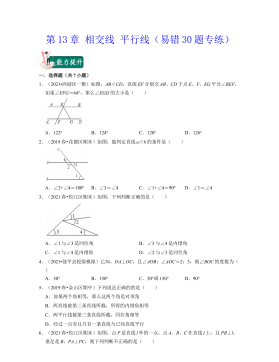
 2024-10-14 25
2024-10-14 25 -
七年级数学下册(易错30题专练)(沪教版)-第13章 相交线 平行线(解析版)VIP免费
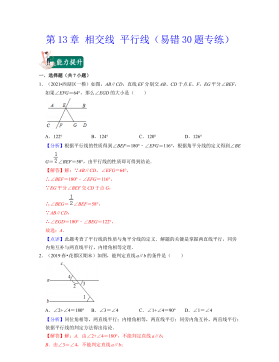
 2024-10-14 28
2024-10-14 28 -
七年级数学下册(易错30题专练)(沪教版)-第12章 实数(原卷版)VIP免费
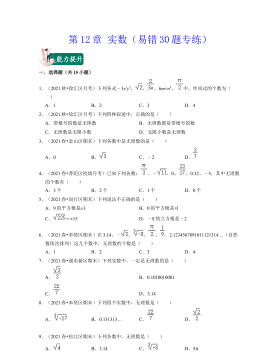
 2024-10-14 25
2024-10-14 25 -
七年级数学下册(易错30题专练)(沪教版)-第12章 实数(解析版)VIP免费
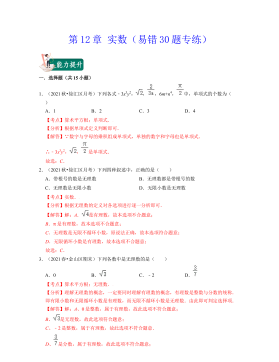
 2024-10-14 19
2024-10-14 19 -
七年级数学下册(压轴30题专练)(沪教版)-第15章平面直角坐标系(原卷版)VIP免费
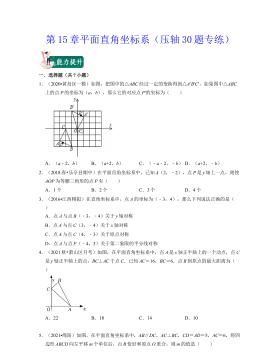
 2024-10-14 18
2024-10-14 18 -
七年级数学下册(压轴30题专练)(沪教版)-第15章平面直角坐标系(解析版)VIP免费

 2024-10-14 27
2024-10-14 27 -
七年级数学下册(压轴30题专练)(沪教版)-第14章三角形(原卷版)VIP免费

 2024-10-14 18
2024-10-14 18 -
七年级数学下册(压轴30题专练)(沪教版)-第14章三角形(解析版)VIP免费

 2024-10-14 30
2024-10-14 30 -
七年级数学下册(压轴30题专练)(沪教版)-第13章 相交线 平行线(原卷版)VIP免费
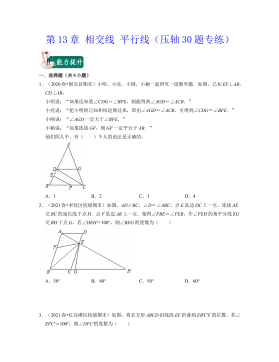
 2024-10-14 25
2024-10-14 25 -
七年级数学下册(压轴30题专练)(沪教版)-第13章 相交线 平行线(解析版)VIP免费
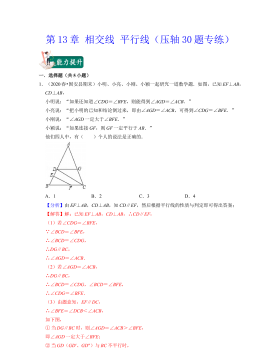
 2024-10-14 22
2024-10-14 22
作者:侯斌
分类:高等教育资料
价格:15积分
属性:46 页
大小:2.97MB
格式:PDF
时间:2025-01-09
相关内容
-

七年级数学下册(压轴30题专练)(沪教版)-第15章平面直角坐标系(原卷版)
分类:中小学教育资料
时间:2024-10-14
标签:无
格式:DOCX
价格:15 积分
-

七年级数学下册(压轴30题专练)(沪教版)-第15章平面直角坐标系(解析版)
分类:中小学教育资料
时间:2024-10-14
标签:无
格式:DOCX
价格:15 积分
-

七年级数学下册(压轴30题专练)(沪教版)-第14章三角形(原卷版)
分类:中小学教育资料
时间:2024-10-14
标签:无
格式:DOCX
价格:15 积分
-

七年级数学下册(压轴30题专练)(沪教版)-第14章三角形(解析版)
分类:中小学教育资料
时间:2024-10-14
标签:无
格式:DOCX
价格:15 积分
-

七年级数学下册(压轴30题专练)(沪教版)-第13章 相交线 平行线(原卷版)
分类:中小学教育资料
时间:2024-10-14
标签:无
格式:DOCX
价格:15 积分


